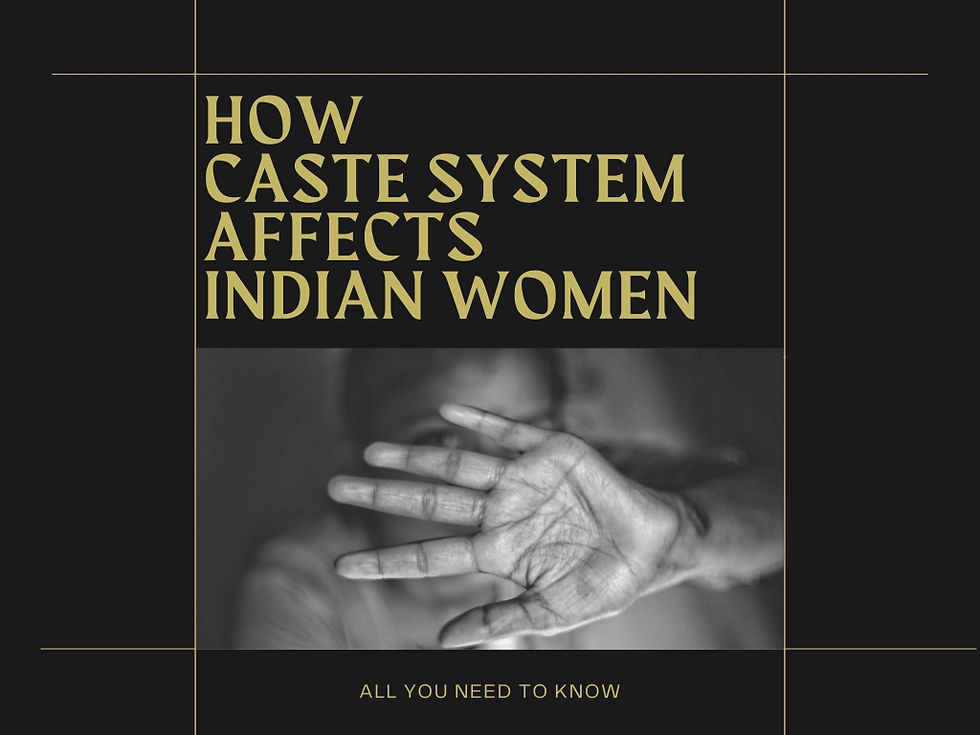How Does The Caste System Affects Indian Women ?
- GirlUp Constitution

- Jul 8, 2022
- 2 min read

-By Khushali Jain
THE WORD “CASTE” DOESN'T NEED ANY DEFINITION OR CLARIFICATION WE ALL KNOW WHAT IT IS. It's a categorization that is attached to our identity. We date back its origin to that of the Gupta period or way before. It is omnipresent.
Today in this article our focus is on how women are affected by this caste system. A caste is a worm that has eaten each section of society in a way or other whether a class, creed, race, or gender. Women are always seen as an object to everyone. They are seen as easy targets to aim at. To glorify our words, SANSKRITI, SANSKAAR, AND SUSHILTA we have embedded our women to bond with it. They are the carrier to be with. The dharmashastras had entitled the so-called rules, laws, or what I call zanjire that women had to do if they wanted to live.
If you wonder if the caste system in India started from where the universe existed then you are wrong, it started after the Vedic period and credit goes to Manu, the first human, who inscribed all these biases and genderization.
Quoting a feminist historian Uma Chakravarti discusses the need to look at caste beyond the usual dichotomy of purity and pollution in Gendering Caste. The book is part of Sage's "Theorising Feminism" series, and focuses on how caste and gender interact inextricably to support patriarchy and prolong disparities through the institutionalization of roles created for women in modern forms. She believes that the function of marriage and its significance in preserving and reinforcing the "assumed immortality of the male line," the "vansa," should be scrutinized more closely. If the lower castes' productive power was seized, the higher castes controlled women's "reproductive power," she says. Women served as "gatekeepers," purveyors, and curators of the hierarchy.
How can we forget Dr. Babasaheb Ambedkar Ji, the one who started a massive movement against the caste system? He explains how women were targeted as surplus women against the men and the derogatory caste system. He talks about endogamy, child marriage, sati, widowhood, and objectifying the women’s sexuality for the sake of their so-called pleasure and “Ghar-samaj ki izzat”.
He says castes were regarded as born not made, thus making them automatically exclusionary.





Comments